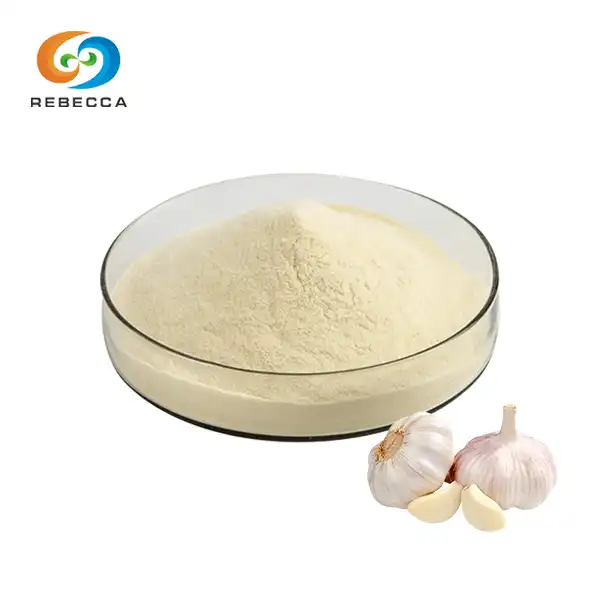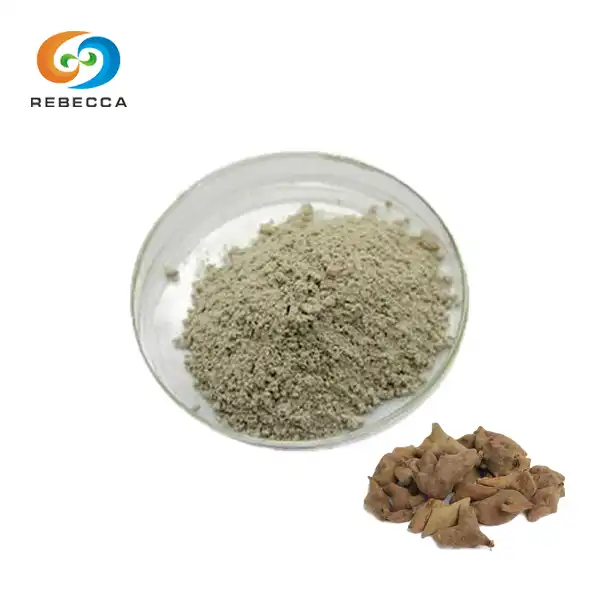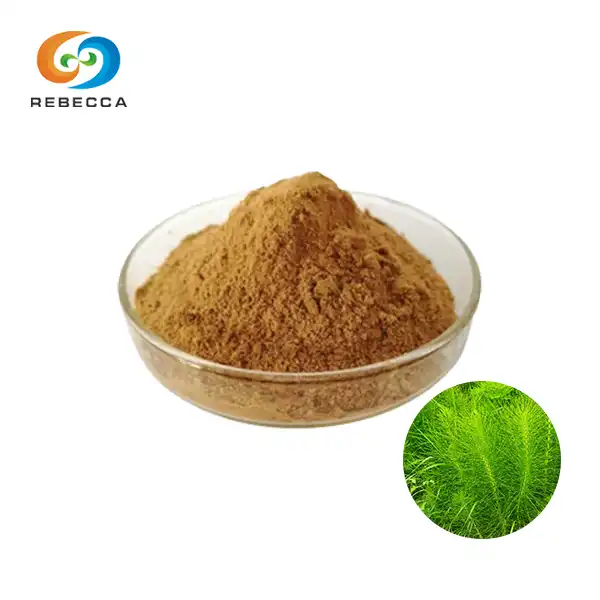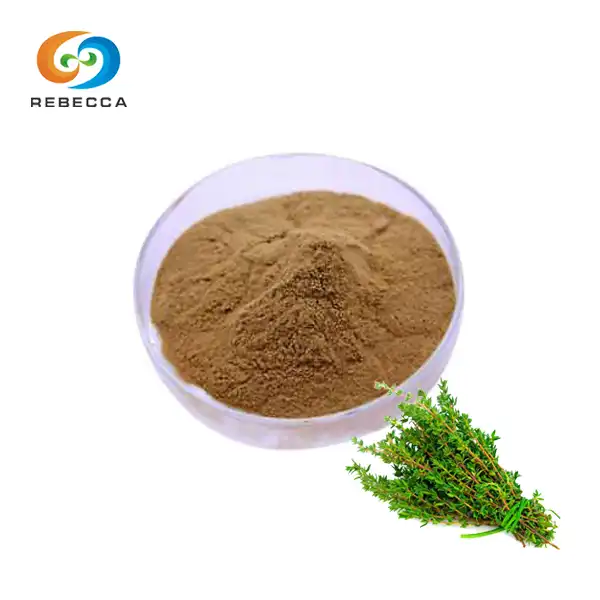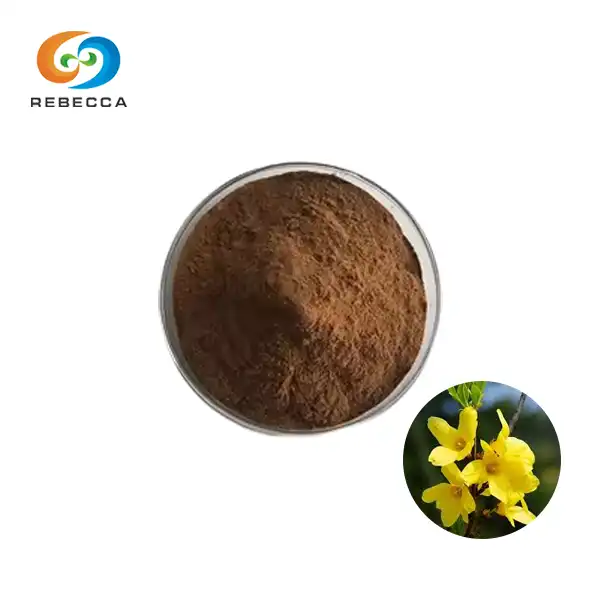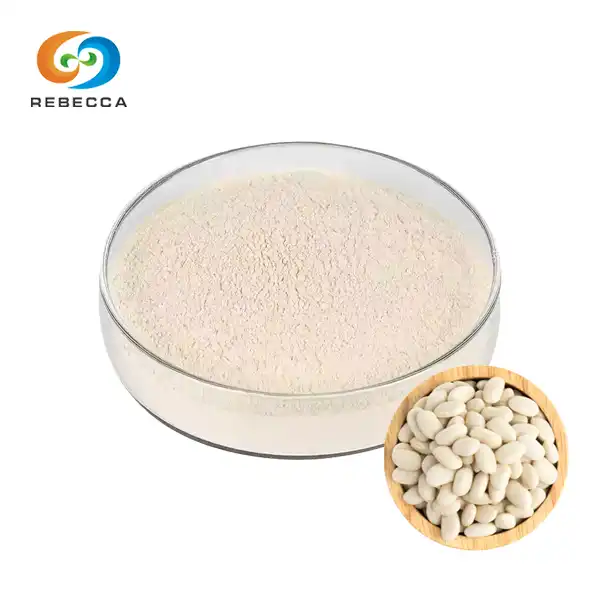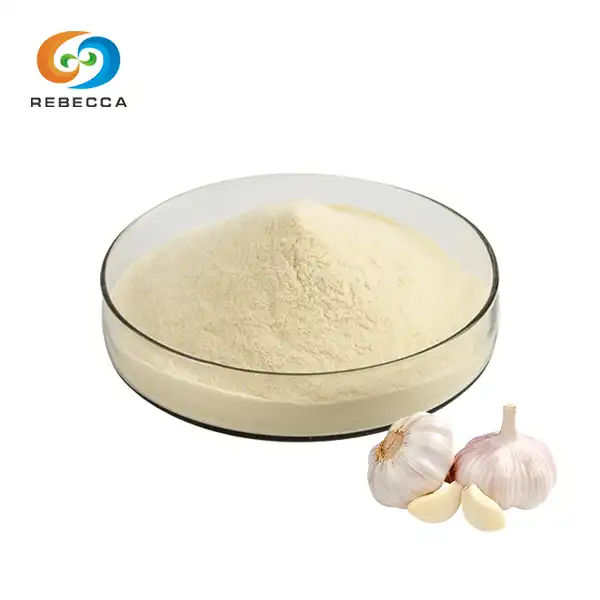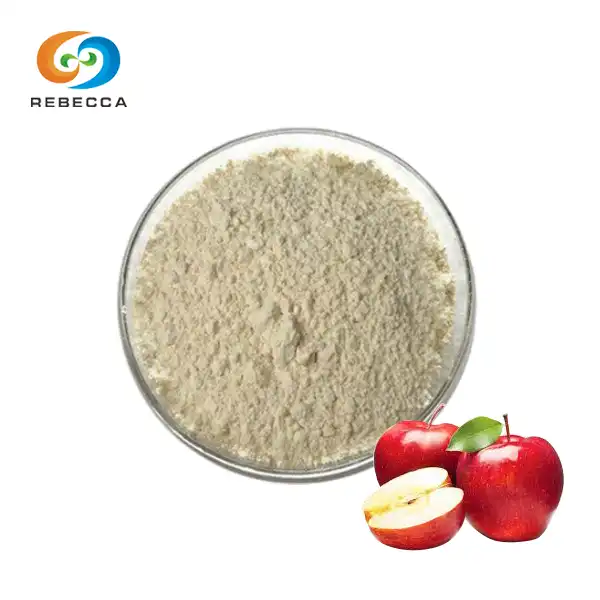How to extract curcumin from turmeric powder?
Turmeric extract powder, a vibrant yellow spice derived from the Curcuma longa plant, has been used for centuries in cooking and traditional medicine. At the heart of turmeric's health benefits lies curcumin, a powerful compound with remarkable properties. In this comprehensive guide, we'll explore the process of extracting curcumin from turmeric powder, delving into the science, methods, and best practices to ensure high-quality results.

What is curcumin, and why extract it from turmeric powder?
Curcumin extract powder is the primary bioactive compound found in turmeric, responsible for its distinctive yellow color and many of its health benefits. This powerful polyphenol has garnered significant attention in the scientific community due to its potential therapeutic properties, including:
- Anti-inflammatory effects
- Antioxidant activity
- Potential cancer-fighting properties
- Neuroprotective benefits
- Cardiovascular health support
While turmeric powder contains curcumin naturally, the concentration is relatively low, typically ranging from 2-5% by weight. Extracting curcumin allows for the creation of more potent supplements and products with higher concentrations of this beneficial compound.
The process of extracting curcumin from turmeric powder is crucial for several reasons:
- Increased potency: Concentrated curcumin extracts can deliver higher doses of the active compound, potentially enhancing its therapeutic effects.
- Improved bioavailability: Curcumin on its own has poor bioavailability, meaning the body doesn't absorb it well. Extraction methods can be combined with techniques to enhance absorption, such as the addition of piperine (found in black pepper) or the creation of nanoparticles.
- Versatility in applications: Purified curcumin can be used in various forms, including capsules, tablets, topical creams, and even as a natural food coloring agent.
- Research purposes: Isolated curcumin is essential for scientific studies investigating its potential health benefits and mechanisms of action.

What are the common methods for curcumin extraction?
Several methods can be employed to extract curcumin from turmeric powder, each with its own advantages and considerations. Here are some of the most common techniques:
1. Solvent Extraction
Solvent extraction is one of the most widely used methods for obtaining curcumin from turmeric powder. This process involves:
- Mixing turmeric powder with an organic solvent (e.g., ethanol, methanol, or acetone)
- Allowing the mixture to sit for a period of time, during which the solvent dissolves the curcumin
- Filtering the solution to remove solid particles
- Evaporating the solvent to leave behind a curcumin-rich extract
Solvent extraction is relatively simple and can be performed at various scales, from laboratory to industrial. However, it's crucial to ensure complete removal of any residual solvents, as some may be harmful if ingested.
2. Soxhlet Extraction
Soxhlet extraction is a specialized form of solvent extraction that uses a Soxhlet apparatus. This method offers several advantages:
- Continuous extraction process, which can improve efficiency
- Requires less solvent compared to traditional solvent extraction
- Can achieve higher yields of curcumin
The Soxhlet method is particularly useful for laboratory-scale extractions and research purposes.
3. Supercritical Fluid Extraction (SFE)
SFE, typically using supercritical carbon dioxide (CO2), is a more advanced extraction technique that offers several benefits:
- No residual solvent in the final product, as CO2 evaporates completely
- Lower processing temperatures, which can help preserve heat-sensitive compounds
- Highly selective extraction, resulting in purer curcumin extracts
While SFE can produce high-quality extracts, it requires specialized equipment and can be more expensive to implement.
4. Microwave-Assisted Extraction (MAE)
MAE uses microwave energy to heat the solvent and turmeric powder mixture, which can:
- Reduce extraction time significantly
- Improve extraction efficiency
- Potentially preserve more of the curcumin extract powder's beneficial properties
This method is gaining popularity due to its speed and efficiency, particularly for smaller-scale extractions.
5. Ultrasound-Assisted Extraction (UAE)
UAE employs high-frequency sound waves to disrupt cell walls and enhance the release of curcumin from turmeric powder. Benefits include:
- Reduced extraction time
- Lower solvent consumption
- Potential for higher yields
UAE can be combined with other extraction methods to further improve efficiency.

How to ensure purity and quality during the extraction process?
Extracting high-quality curcumin requires attention to detail and adherence to best practices throughout the process. Here are some key considerations for ensuring purity and quality:
1. Source High-Quality Turmeric Powder
The quality of your starting material is crucial. Look for organic curcumin extract powder from reputable suppliers, ideally with a known curcumin content. Factors to consider include:
- Curcumin concentration
- Absence of pesticides and contaminants
- Proper storage conditions to prevent degradation

2. Optimize Extraction Parameters
Each extraction method has variables that can be adjusted to maximize yield and purity. These may include:
- Solvent type and concentration
- Extraction time and temperature
- Solvent-to-turmeric ratio
- Particle size of the turmeric powder
Experiment with these parameters to find the optimal conditions for your specific extraction setup.

3. Use Food-Grade Solvents and Materials
If your extracted curcumin is intended for consumption, ensure that all solvents and materials used in the process are food-grade and approved for use in dietary supplements.
4. Implement Proper Filtration and Purification Steps
After the initial extraction, additional purification steps can help improve the quality of your curcumin extract:
- Multiple filtration stages to remove particulates
- Chromatography techniques for further purification
- Recrystallization to improve purity

5. Analyze and Verify Curcumin Content
Regular testing of your extracted curcumin is essential to ensure consistent quality. Common analytical methods include:
- High-Performance Liquid Chromatography (HPLC)
- Spectrophotometry
- Thin-Layer Chromatography (TLC)
6. Properly Store the Extracted Curcumin
Curcumin can degrade when exposed to light, heat, and oxygen. To maintain quality:
- Store in airtight, opaque containers
- Keep in a cool, dry place
- Consider adding antioxidants to improve stability

7. Follow Good Manufacturing Practices (GMP)
If producing curcumin extract powder for commercial purposes, adherence to GMP guidelines is crucial for ensuring consistent quality and safety.
Extracting curcumin from turmeric powder is a process that combines science and precision. By understanding the various extraction methods and implementing quality control measures, you can produce high-quality curcumin extracts suitable for a wide range of applications, from research to dietary supplements.
As the interest in natural health solutions continues to grow, the demand for pure, potent curcumin extracts is likely to increase. Whether you're a researcher, a supplement manufacturer, or simply a health enthusiast, mastering the art and science of curcumin extraction can open up exciting possibilities in the world of natural therapeutics.

For more information on our turmeric extract powder or to discuss custom extraction services, please don't hesitate to contact us at information@sxrebecca.com. Our team of experts is ready to assist you in achieving the highest quality curcumin extracts for your specific needs.
References:
- Prasad S, Aggarwal BB. Turmeric, the Golden Spice: From Traditional Medicine to Modern Medicine. In: Herbal Medicine: Biomolecular and Clinical Aspects. 2nd edition. 2011.
- Priyadarsini KI. The Chemistry of Curcumin: From Extraction to Therapeutic Agent. Molecules. 2014;19(12):20091-20112.
- Paulucci VP, Couto RO, Teixeira CC, Freitas LAP. Optimization of the extraction of curcumin from Curcuma longa rhizomes. Brazilian Journal of Pharmacognosy. 2013;23(1):94-100.
- Mandal V, Mohan Y, Hemalatha S. Microwave assisted extraction of curcumin by sample–solvent dual heating mechanism using Taguchi L9 orthogonal design. Journal of Pharmaceutical and Biomedical Analysis. 2008;46(2):322-327.
- Tapal A, Tiku PK. Complexation of curcumin with soy protein isolate and its implications on solubility and stability of curcumin. Food Chemistry. 2012;130(4):960-965.
